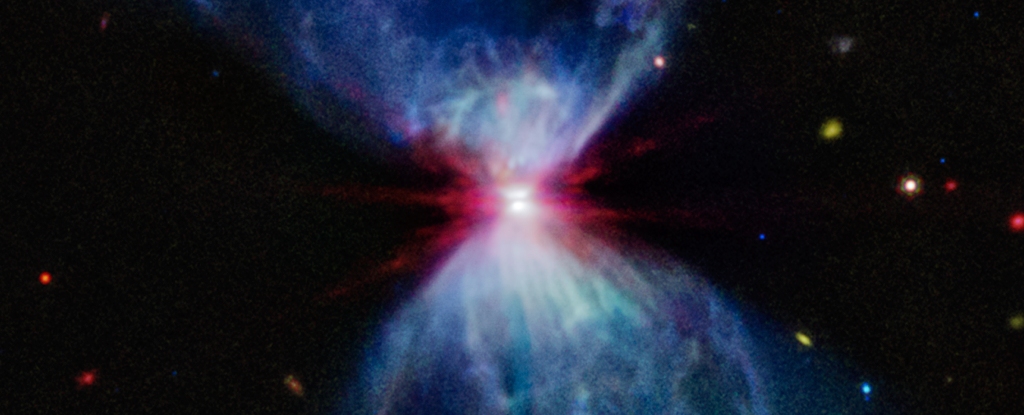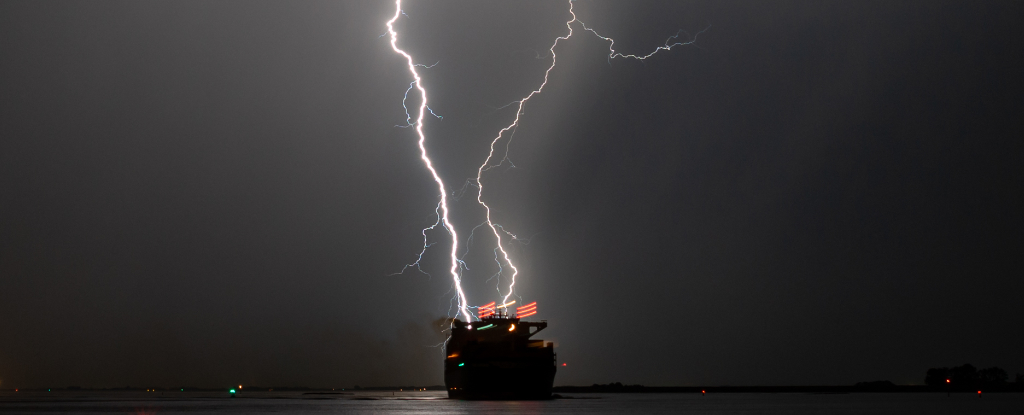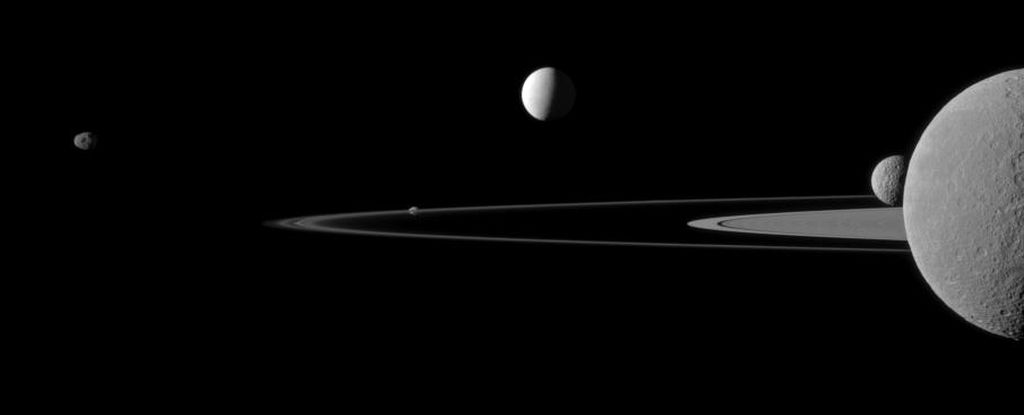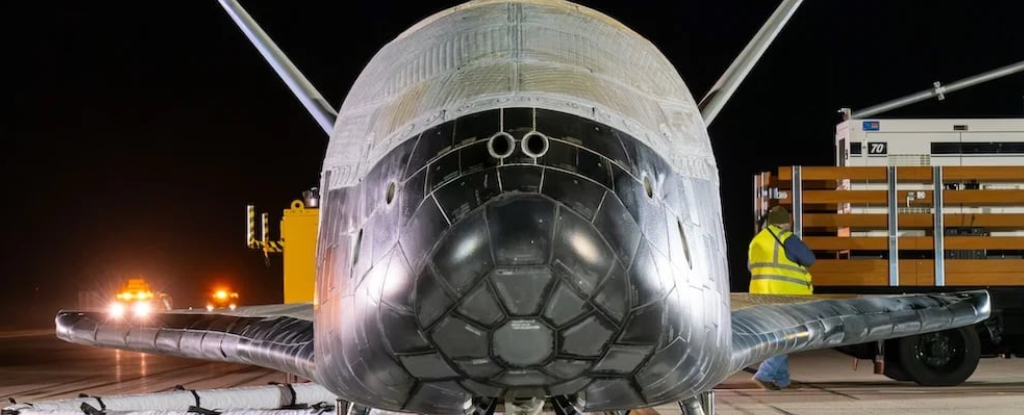Wherever the JWST looks in space, matter and energy are interacting in spectacular displays. The Webb reveals more detail in these interactions than any other telescope because it can see through dense gas and dust that cloak many objects.
In a new image, the JWST spots a young protostar only 100,000 years old.
The star is named L1527, and at this young age, it’s still ensconced in the molecular cloud that spawned it. This is one of the reasons NASA built the JWST (with help from the ESA and the CSA.) The telescope can see through dust and gas to reveal the earliest stages of star formation.
This image was captured with MIRI, the Mid-Infrared Instrument. The young protostar is at the heart of it all, and it’s still growing. It’s accumulating mass from the protoplanetary disk that surrounds it. The disk is the tiny dark horizontal line at the image’s center.
The protostar isn’t a main-sequence star, so it’s not undergoing fusion like the Sun is. There may be a small amount of deuterium fusion in its core, but it generates energy in a different way.
As the star’s gravitational power draws material nearer, the material is compressed and heats up. More energy comes from shockwaves generated by incoming material that collides with existing gas. This is the energy that lights up the star and its surroundings inside the giant molecular cloud that spawned it.
As young protostars accumulate mass, they generate powerful magnetic fields. Combined with the star’s rotation, these fields drive matter away from the star.
So, as a protostar acquires mass, it also ejects some of it back into space in spectacular hourglass-shaped jets that come from the star’s poles. These jets create visible bow shocks in the matter around the star, which are the filamentary structures.
There are polycyclic aromatic hydrocarbons (PAHs) in the star’s environment. They’re organic compounds abundant throughout the Universe that may have contributed to the appearance of life. They glow blue in the image, including in the filamentary structures.
The red region in the center is a thick layer of gas and dust surrounding the young star, lit up by the star’s energy. The white region between the red and the blue is a mixture of materials. There are more PAHs here, as well as ionized gases like neon and other hydrocarbons.
This isn’t the first time the JWST has examined L1527. In 2022, it observed the protostar with its Near-Infrared Camera (NIRCam).
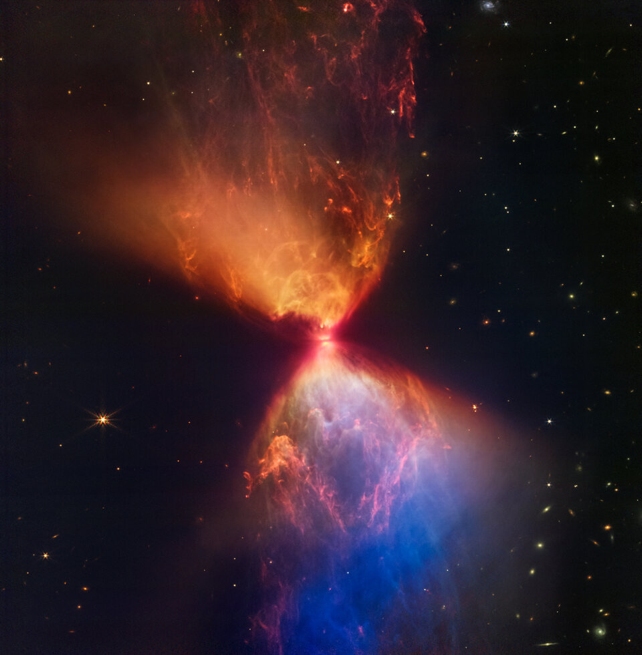
This beautiful display of matter and energy interacting is transient.
Over time, the protostar’s powerful outflows will clear its surroundings of much of the gas and dust, though it’ll still have its protoplanetary disk. Eventually, the star will become a main sequence star, easily seen without its veil of gas and dust. By that time, the star’s planetary system will be taking shape.
There are unanswered questions about protostar formation, and one of the JWST’s main science goals is star formation. For example, astrophysicists don’t know exactly how and when fusion is triggered, and a protostar becomes a main-sequence star.
Though astronomers know there are powerful magnetic fields around protostars, they don’t know exactly how they form and what role they play in the star’s collapse and rotation.
The JWST has made some headway on this question. It recently confirmed that jets from young stars are aligned because of the star’s rotation and magnetic fields, something supported by theory but not confirmed by observations until now.
There are also uncertainties about how binary stars form. Do they form the same way solitary stars do? Why are so many stars binaries?
The exact nature of the events that trigger star formation is also unclear. Shockwaves from supernovae can trigger star birth, but what about in other cases? Is it just a matter of density?
The answers to these questions will be incremental. With its ability to see more detail in the young stars and the clouds of swirling gas and dust that enshroud them, the JWST is making progress one image at a time.
This article was originally published by Universe Today. Read the original article.


